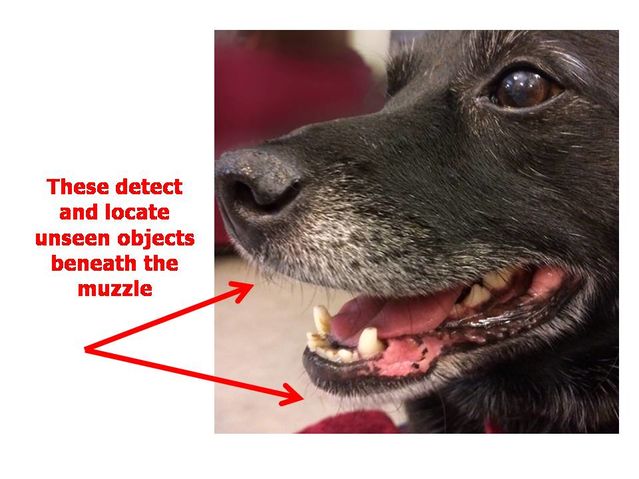
They serve as tactile organs so they are very sensitive to touch. And how do - Answered by a verified Dog Specialist We use cookies to give you the best possible experience on our website.

Whiskers help dogs see things that lie right under their noses by constantly sending information to the canine brain.
Why does a dog have whiskers under his chin. Chin whiskers work with other whiskers on a dogs face to give him feedback about his surroundings. If your dog want to get a drink or a bite to eat in the middle of the night his chin whiskers provide vital feedback about the distant to the bowl and how far down the water or food is within the bowl. Chin whiskers are longer stiffer and three times the thickness of regular dog hairs.
They sprout out of small mounds on the chin and other parts of a dogs muzzle. The whiskers are deeply embedded in the mound inside a hair follicle that is packed with nerves and blood. Dogs also have a blind spot under their chin which explains why they have a hard time seeing whats right under their nose.
So while his mystacial whiskers detect whats on either side of him his interramal tuft alerts him as to whats beneath his face. Why Do Dogs Have Whiskers. The dog actually does not have to make physical contact.
And see if you can catch the whiskers on these pups as they play in the video below. Why Do Dogs Have Whiskers Under The Chin. By Adrienne Farricelli CPDT-KA.
A dogs chin whiskers or vibrissae which comes from the Latin word vibrio meaning to vibrate is sensitive to touch and gives a neural response to the brain. These whiskers are deeply rooted inside hair follicles and packed with different nerves and blood. Dogs see better at a distance but have difficulty focusing on objects up close.
Whiskers help dogs see things that lie right under their noses by constantly sending information to the canine brain. As a dog approaches something in his path he stirs up air currents that. Cats can also grow whiskers behind their wrists.
When you look under your dogs chin you might stumble upon the interramal tufts which arise from the little spot in the middle. She is also a former veterinarian assistant and author of the popular online dog training course. So the reason that dogs have whiskers is because despite their great senses of smell and hearing canine vision is not so wonderful.
Click Images to Large View Why Do Dogs Have Whiskers Under Their Chin Dog Care. Identifying Lump Under Chin Boxer Forum Boxer Breed. Click Images to Large View Identifying Lump Under Chin Boxer Forum Boxer Breed.
Help Ringworm Wart Round Mark Under My Dogs Chin. Whether the whiskers are around your dogs eyes nose or chinor all of the abovetheyre still the same structure just in distinct locations on your dogs face. Vogelsang says whiskers that protrude from the muzzle jaw and above the eyes with follicles at the base of the hairs are full of nerves.
Whiskers are unlike any other hairs found on your dogs body. They are thicker longer and sprout from a hair follicle thats highly innervated by an abundance of sensory nerves responsible for helping your dog navigate the world around him. Also known as vibrissae whiskers tend to work in an antenna-like function.
Just as on a dogs muzzle the whiskers under a dogs chin are crucial for sensory information. Cutting or trimming these whiskers has the same impact on a dog as cutting or trimming other whiskers which is a reduced ability to navigate around. Whiskers are sophisticated hairs that are different from the hairs elsewhere on a dogs body because each whiskers base has a high concentration of touch-sensitive neurons.
When the whiskers are touched it sends a signal to the neurons that serve as a warning device that something is near the dogs face. My dog has a lump under his skin by his whiskers which is tender could this be an infected whisker follicle. And how do - Answered by a verified Dog Specialist We use cookies to give you the best possible experience on our website.
Nov 29 2015 - Why Do Dogs Have Whiskers Under The Chin. Those whiskers and hairs found on a dogs face are there for a purpose and a very important one too. Whiskers which are also known as vibrissae are long thick hairs located on the sides of the nose and muzzle on the chin and on the forehead above the eyes on many animal species including dogs.
Whiskers are among the first hairs to grow in puppies. They serve as tactile organs so they are very sensitive to touch.